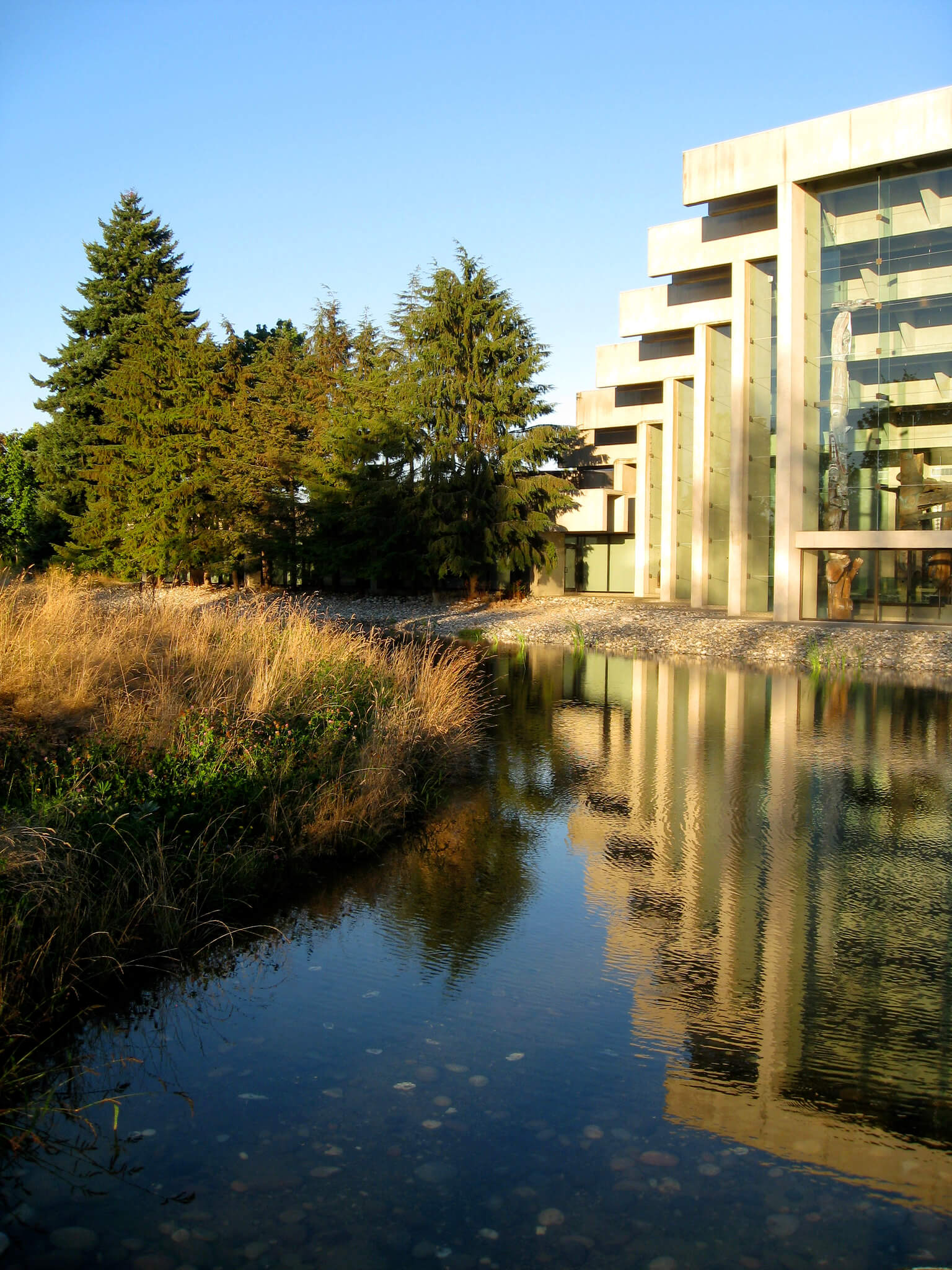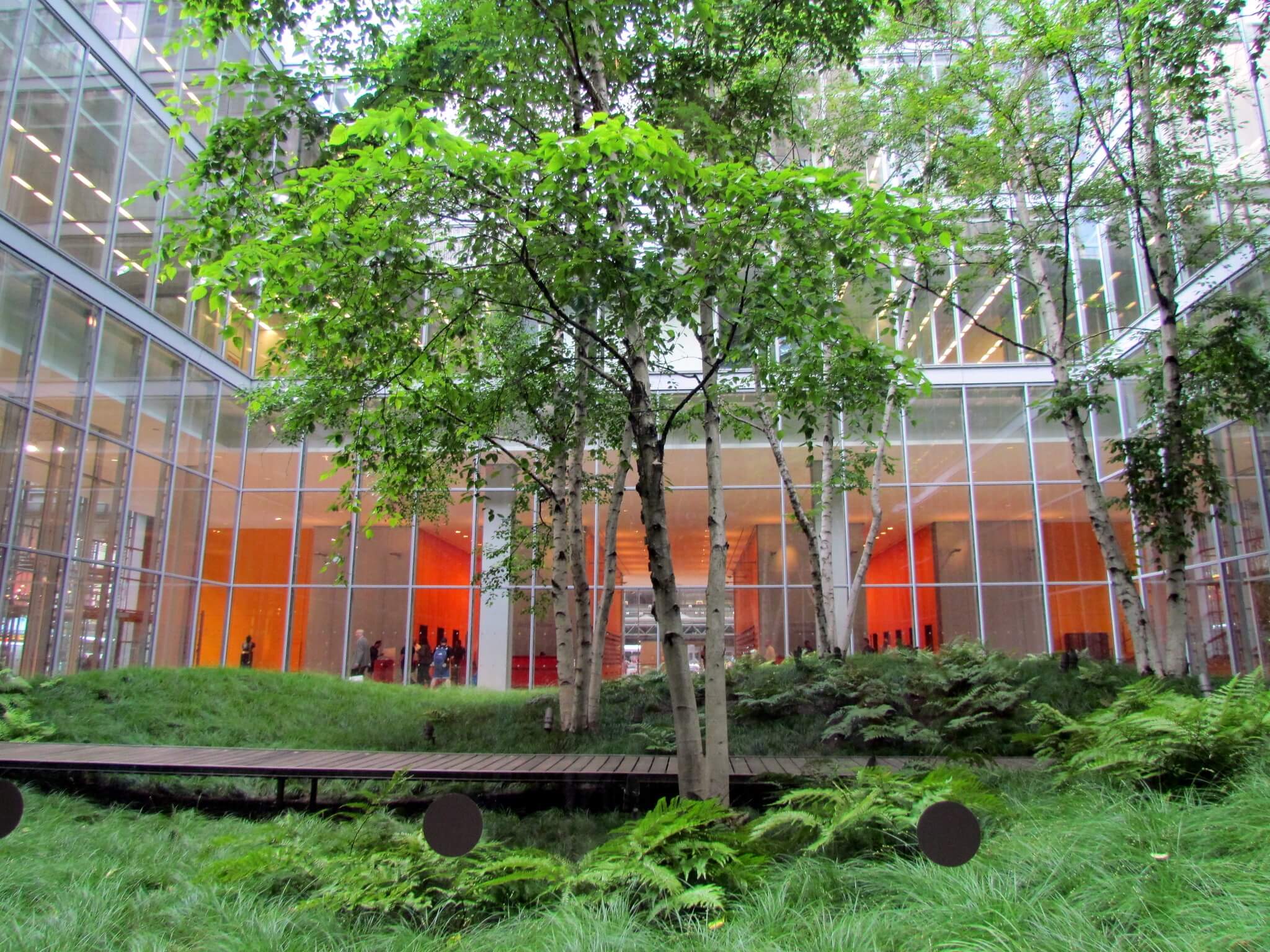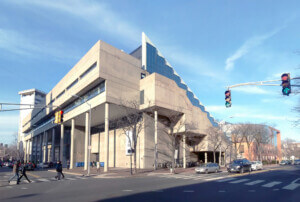German-born Canadian landscape architect Cornelia Hahn Oberlander, who revolutionized mid-20th century urban play spaces and cleared the path for women in the profession, has died in Vancouver, British Columbia, just weeks ahead of what would have been her centenary on June 20.*
As noted by the CBC, Oberlander’s May 22 passing also comes a few short days after Vancouver City Council voted to bestow her with the prestigious Freedom of the City Award, which recognizes “individuals who have gained national or international acclaim in their field and brought recognition to Vancouver through their work.” She will receive the award posthumously.
“During Jewish Heritage Month this May, we honour her outstanding accomplishments in bringing world-class landscape design to Canada, and to Vancouver in particular,” said Vancouver Mayor Kennedy Stewart in a statement released by the city and shared by Canadian media. “On behalf of [the] council, I extend my deepest sympathies to her family and friends. May her memory be a blessing.”

Oberlander’s mark on Vancouver is indelible. Just a few of her celebrated projects in and around British Columbia’s most populous city include Robson Square, the Museum of Anthropology at the University of British Columbia (both in collaboration with frequent collaborator, the architect Arthur Erickson), the rooftop garden at the Vancouver Public Library Central Branch (with Moshe Safdie, another repeat collaborator), the VanDusen Botanical Garden visitor center, and a tranquil garden for the burn unit at Vancouver General Hospital. Oberlander also designed a considerable number of modernist children’s playgrounds across Vancouver and is credited for the ubiquitous presence of logs at city beaches, which she envisioned as a form of natural seating for beachgoers.
“Vancouver residents and visitors continue to benefit from Oberlander’s dream of ‘green cities’ that infuse rural and urban harmony,” said the city in its statement on her passing.
I want to send my deepest condolences to the loved ones of Cornelia Oberlander.@CityofVancouver is honouring her incredible contributions by awarding her the prestigious Freedom of the City award.
An icon of the Jewish community, we reflect on her legacy of city building.
— Kennedy Stewart (@kennedystewart) May 23, 2021
While a lion’s share of Oberlander’s work can be found in and around Vancouver, her impact on the larger profession of landscape architecture and the role of women within it is more far-reaching. Born to a horticulturist mother and an engineer father in Mülheim an der Ruhr, Germany, Oberlander emigrated to the United States at the age of 18 in 1938 after fleeing the Nazis with her mother and sister. (Her father had died in an avalanche while skiing several years prior.)
In 1944, Oberlander graduated from Smith College and remained in Massachusetts to attend the Harvard Graduate School of Design, where she studied under Walter Gropius among others. Not only one of the first women to be admitted to the GSD, Oberlander was also the first woman to graduate with a degree in landscape architecture from the school. Other female landscape architects soon followed in Oberlander’s footsteps at the GSD including Boston-based Carol R. Johnson, who passed away last December at the age of 91.
Post-Harvard, Oberlander relocated to Philadelphia where she worked as a planner for the Citizens’ Council on City Planning, collaborating with Vermont-based landscape architect Dan Kiley on the landscapes, including playgrounds, of two separate public housing projects, one led by Louis Kahn and the other by Oscar Stonorov.
Oberlander and her husband, the architect and planner H. Peter Oberlander, ultimately settled in Vancouver, where she established her eponymous landscape architecture practice in 1953.
A celebrated, decades-spanning career followed as Oberlander took on various high-profile Canadian—and some international—commissions. In addition to her practice’s completed projects in Vancouver, other Oberlander-designed landscapes of note include the Children’s Creative Centre at Expo ’67 in Montreal; the National Gallery in Ottawa (1988 with Moshe Safdie Architects); the Canadian Chancery in Washington, D.C. (1989 with Arthur Erickson Architects); Ottawa’s Peacekeeping Monument (1994 with Richard and Gregory Henriquez and artist Jack Harman); and the Northwest Territories Legislative Building in Yellowknife (1995 with Matsuzaki/Wright Architects); and the lobby garden at the New York Times Building in New York City (2007 with HMWhite and Renzo Piano Building Workshop).

Oberlander was prescient in her approach to designing landscapes for a changing climate. As she noted in an extensive oral history released by the Washington, D.C.-based nonprofit The Cultural Landscape Foundation (TCLF) in 2008:
“The future for landscape architecture is immense. And if landscape architects don’t take the opportunity at this point, while our governments are waffling on climate change, if they don’t learn this climate change inside-out, namely storm-water management, limiting footprints, using plants that don’t need much maintenance or water, if they don’t seize that opportunity, then the landscape architects are asleep under the ground.”
A Fellow of both the Canadian Society of Landscape Architects (CSLA) and the American Society of Landscape Architects (ASLA), Oberlander was the recipient of the highest honors from each respective organization: The inaugural Governor General’s Medal in Landscape Architecture from the CSLA in 2016 and the ASLA Medal four years prior. In 2016, she was admitted to the Order of British Columbia.
It is with profound sadness that we announce that Cornelia Hahn Oberlander, who @nytimes called “the grande dame of landscape architecture,” passed away on May 22, 2021 at the age of 99. A funeral will be held on May 24 and will be live streamed: https://t.co/5zljQX0iYD pic.twitter.com/s3FcY87fnX
— Charles Birnbaum (@TCLFdotORG) May 23, 2021
In 2019, TCLF named its newly established, first-of-its-kind $100,000 landscape award in honor of Oberlander. The inaugural laureate(s) of the biennial Cornelia Hahn Oberlander International Landscape Prize, curated by John Beardsley, will be announced by TCLF this fall.
“Cornelia was a giant in the field of landscape architecture, an inspiring and pioneering figure known for her extraordinary creativity, courage and vision,” said Charles A. Birnbaum, president and CEO of The Cultural Landscape Foundation. “Her legacy of built work and influence demonstrates how one person can shape a profession that has global impact and importance.”
“Landscape architecture has lost not only a great designer but an outstanding public citizen with a deep commitment to our shared environment,” added Beardsley. “Happily, her legacy will live on in the Prize that bears her name.”
A service for Oberlander will be held and streamed live at the Oberlander-designed Temple Sholom Cemetery in Vancouver today, Monday, May 24, at 11:00 a.m. PST.
* Update 6/09/2021: A more recent obituary published by the New York Times has noted that Oberlander passed away from complications of COVID-19. Oberlander’s daughter, Judy Oberlander, relayed this detail, one not publicly known when this piece was published, to the Times.











